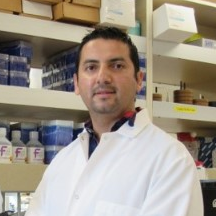Viral Pathogenesis and Immunity
A special issue of Pathogens (ISSN 2076-0817). This special issue belongs to the section "Immunological Responses and Immune Defense Mechanisms".
Deadline for manuscript submissions: closed (15 October 2022) | Viewed by 44497
Special Issue Editor
2. Center for Infectious Disease and Vaccine Research, La Jolla Institute for Immunology, La Jolla, CA 92037, USA
Interests: dengue; Zika; SARS-CoV-2
Special Issues, Collections and Topics in MDPI journals
Special Issue Information
Dear Colleagues,
The aim of this Special Issue to focus on virus–host interactions and pathogenesis, in particular with regard to Zika virus and the coronavirus behind the worldwide pandemic we are currently facing, SARS-CoV-2.
ZIKV was discovered over 50 years ago, but since the 2015–2016 Brazil outbreak, new syndromes associated with ZIKV infection have begun to emerge, including birth defects, sexual transmission, Guillain Barre syndrome, and genital persistence, while studies in mice have established mouse models of ZIKV sexual transmission, vaginal persistence, and infection of adult neuronal stem cells.
As for coronavirus, human CoVs have been found to be the cause of up to 15% of all respiratory infections, including SARS-CoV infection, and studies in the field have defined multiple viral factors associated with SARS virulence and identified promising vaccine candidates against SARS-CoV. SARS-CoV-2, as we all know, causes coronavirus disease 2019 (COVID-19), an infectious respiratory disease which has caused thousands of deaths and overwhelmed public health systems worldwide.
We look forward to your submissions on the topic of virus–host interactions and viral pathogenesis and immunity.
Dr. Jose Angel Regla Nava
Guest Editor
Manuscript Submission Information
Manuscripts should be submitted online at www.mdpi.com by registering and logging in to this website. Once you are registered, click here to go to the submission form. Manuscripts can be submitted until the deadline. All submissions that pass pre-check are peer-reviewed. Accepted papers will be published continuously in the journal (as soon as accepted) and will be listed together on the special issue website. Research articles, review articles as well as short communications are invited. For planned papers, a title and short abstract (about 100 words) can be sent to the Editorial Office for announcement on this website.
Submitted manuscripts should not have been published previously, nor be under consideration for publication elsewhere (except conference proceedings papers). All manuscripts are thoroughly refereed through a single-blind peer-review process. A guide for authors and other relevant information for submission of manuscripts is available on the Instructions for Authors page. Pathogens is an international peer-reviewed open access monthly journal published by MDPI.
Please visit the Instructions for Authors page before submitting a manuscript. The Article Processing Charge (APC) for publication in this open access journal is 2700 CHF (Swiss Francs). Submitted papers should be well formatted and use good English. Authors may use MDPI's English editing service prior to publication or during author revisions.
Keywords
- virus
- evolution
- vaccine
- coronavirus
- flavivirus
- pathogenesis
- vaccine development
- therapeutic strategies to control virus infections






